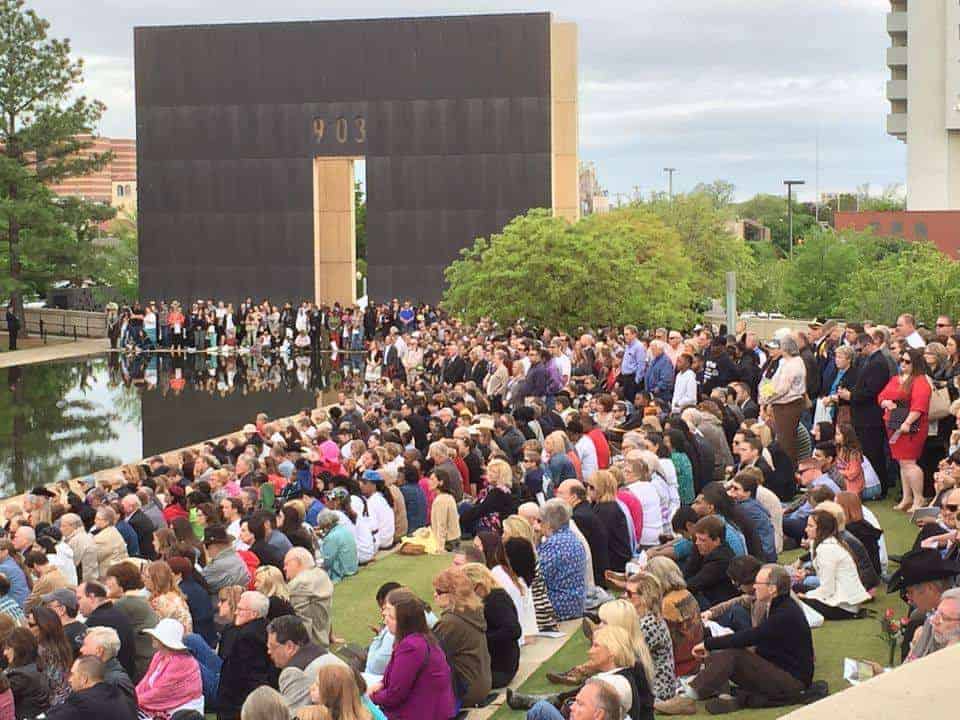
22 Apr Oklahoma City Bombing, Part 2
THE OKLAHOMA CITY BOMBING, TERRY NICHOLS, AND McALESTER OKLAHOMA – PART TWO.
On March 2, 2004, Terry Wayne Nichols entered Courtroom No.1 at the Pittsburg County Courthouse. he was facing 160 counts of murder in the first degree, 160 counts of conspiracy to commit murder, aiding in the placing of a bomb against a public building, and one count of manslaughter over the death of an unborn child. He was also going to face the men and women who would potentially determine his fate for the first time.
After two weeks of jury selection a panel of six men and six women were seated to hear the trial. As I have stated before there was little doubt that Terry Nichols was guilty, after all a jury in Denver, Colorado had already concluded that he was guilty of conspiring with Timothy McVeigh, but nonetheless the State pursued their case with vigor.
Over the course of the two-month trial the prosecution presented what can only be described as a mountain of circumstantial evidence. The star witness for the state, Michael Fortier, testified that Nichols was intimately involved in the conspiracy and had helped obtain bomb ingredients including fertilizer that was mixed with high octane fuel. Fortier also testified that McVeigh and Nichols stole cord and blasting caps from a rock quarry, and that Nichols robbed a gun collector to obtain money for the plot.
The defense tried to paint Nichols in the best possible light they could. Nichols’ defense team claimed that Nichols was the “fall guy” and that others had conspired with McVeigh. The defense wanted to introduce evidence that a group of white supremacists were McVeigh’s real accomplices. However, Judge Taylor would not allow this evidence to be introduced, he concluded that the defense had not demonstrated that these others had committed acts in furtherance of the conspiracy.
Both the state and the defense attempted on different occasions to explore some avenues of popular theory and questions of additional conspirators. However, Judge Taylor kept the respective sides on a direct course and did not allow them to veer into deep theoretical waters. In their concluding argument the defense said, “People who are still unknown assisted Timothy McVeigh.”
That statement seemed to matter little to the jury, because on May 26, 2004, after five hours of deliberation they returned a verdict of guilty on all counts. The jury’s decision surprised no one, including the defense team for Terry Nichols. His attorneys knew that they were essentially defending a guilty man who had already been sentenced to life in prison, and now they would have to enter the phase of the trial which did have real consequences, the penalty phase.
For most of America it was a forgone conclusion that a jury in Oklahoma was going to sentence Terry Nichols to death. Many newspapers and magazine articles across the country concluded that what was taking place in McAlester, Oklahoma was nothing more than a show trial. Those that did attend the guilt phase of the trial, had to give credit to Judge Taylor for how he had conducted the trial, but still had their misgivings as to the fairness of it as the case entered into the penalty phase.
On June 1, 2004, the same jury that determined that Terry Nichols was directly responsible for the taking of 161 lives took their seats for the penalty phase. For the next five days 87 witnesses were called, including victims and family members of Terry Nichols. Nichols’ family members testified that he was a loving family man. The state, in their closing arguments, claimed that Terry Nichols and Timothy McVeigh killed 168 people to make a political statement. They argued that the only proper punishment for Nichols was death. The defense countered by saying that Nichols was dominated and manipulated by McVeigh, that he was remorseful, and had sincerely converted to Christianity.
The jury of six men and six women respectfully and solemnly exited the courtroom only to enter the jury room and begin their work. After 19 and 1/2 hours over a three day period the jury remained hopelessly deadlocked. As a result the jury was excused and the death penalty was no longer an option. The nation seemed to be stunned. Most had come to the forgone conclusion that this trial was nothing more than a show trial and that Nichols would receive the vengeance many believed he deserved. However, what most people didn’t know is that Judge Taylor’s insistence of a fair and impartial trial had created an atmosphere for exactly that. The jury took five hours to deliberate Nichols guilt, and it was not lost on any of those that attended the trial that those six men and women took their duty seriously. Regardless of their decision as to the penalty, the conclusion would be the same…the people of Oklahoma and specifically Pittsburg County had a true respect and admiration for the criminal justice system, and their actions reverberated across the United States.
On August 9, 2004, Terry Nichols addressed the court and spoke on his behalf for the first time. Nichols made a lengthy statement to Judge Taylor, he interlaced his statement with religious references and apologized for his actions. He told Judge Taylor that he would write to the victims families to assist them with their healing process.
Judge Steven Taylor allowed Terry Nichols to conclude his statement without interruption and then he began to speak. Judge Taylor called Nichols a terrorist and said “No American citizen has ever brought this kind of devastation; you are in U.S. history the No. 1 mass murderer in all of U.S. history”. With that Taylor concluded by sentencing Nichols to 161 consecutive life sentences without the possibility of parole. Nichols was returned to the federal super-max prison in Colorado.
It has been twenty years since Timothy McVeigh left a Ryder truck in front of the Alfred P. Murrah building in Oklahoma City, and more than ten years since a jury seated in McAlester, Oklahoma was tasked with the fate of his accomplice. In that time there have been many changes, Wes Lane ended his term as Oklahoma County District attorney and Brian Hermanson ran for District Attorney in another County. Judge Steven Taylor became Justice and Chief Justice Steven Taylor after being appointed to the Oklahoma Supreme Court by Governor Brad Henry. Every year families, dignitaries, and members of the general public descend on the memorial grounds that now mark place that changed America at 9:02 A.M. on April 19, 1995.
But located in McAlester, Oklahoma on Carl Albert Parkway sits a building that will forever hold its own special place in the story of the Oklahoma City Bombing and American Jurisprudence. Not for a tragedy that occurred there, but rather for a victory. It was at the Pittsburg County Courthouse that faith in our criminal justice system was proven to be alive and well. And for that I am proud.



No Comments